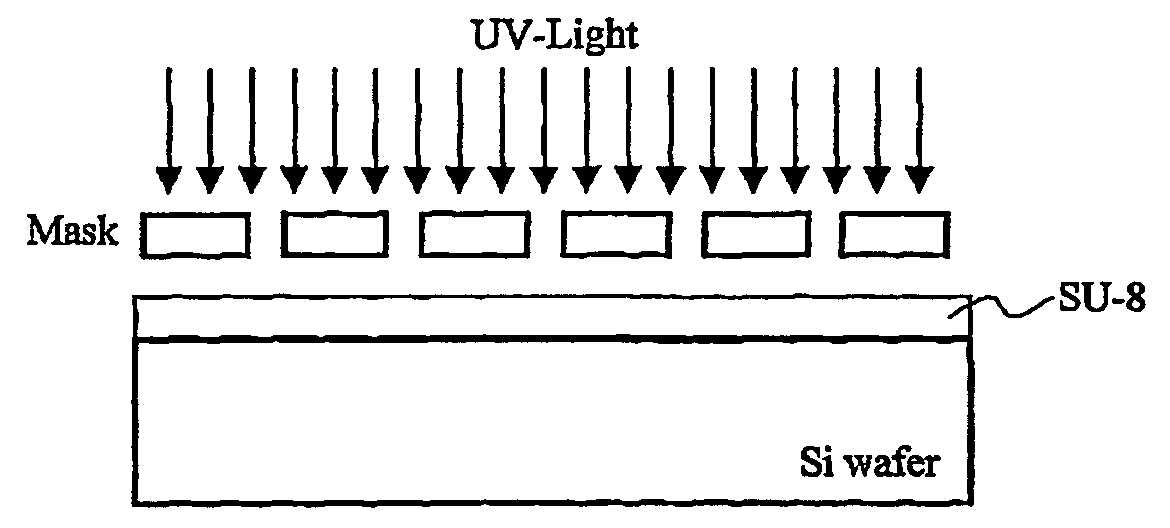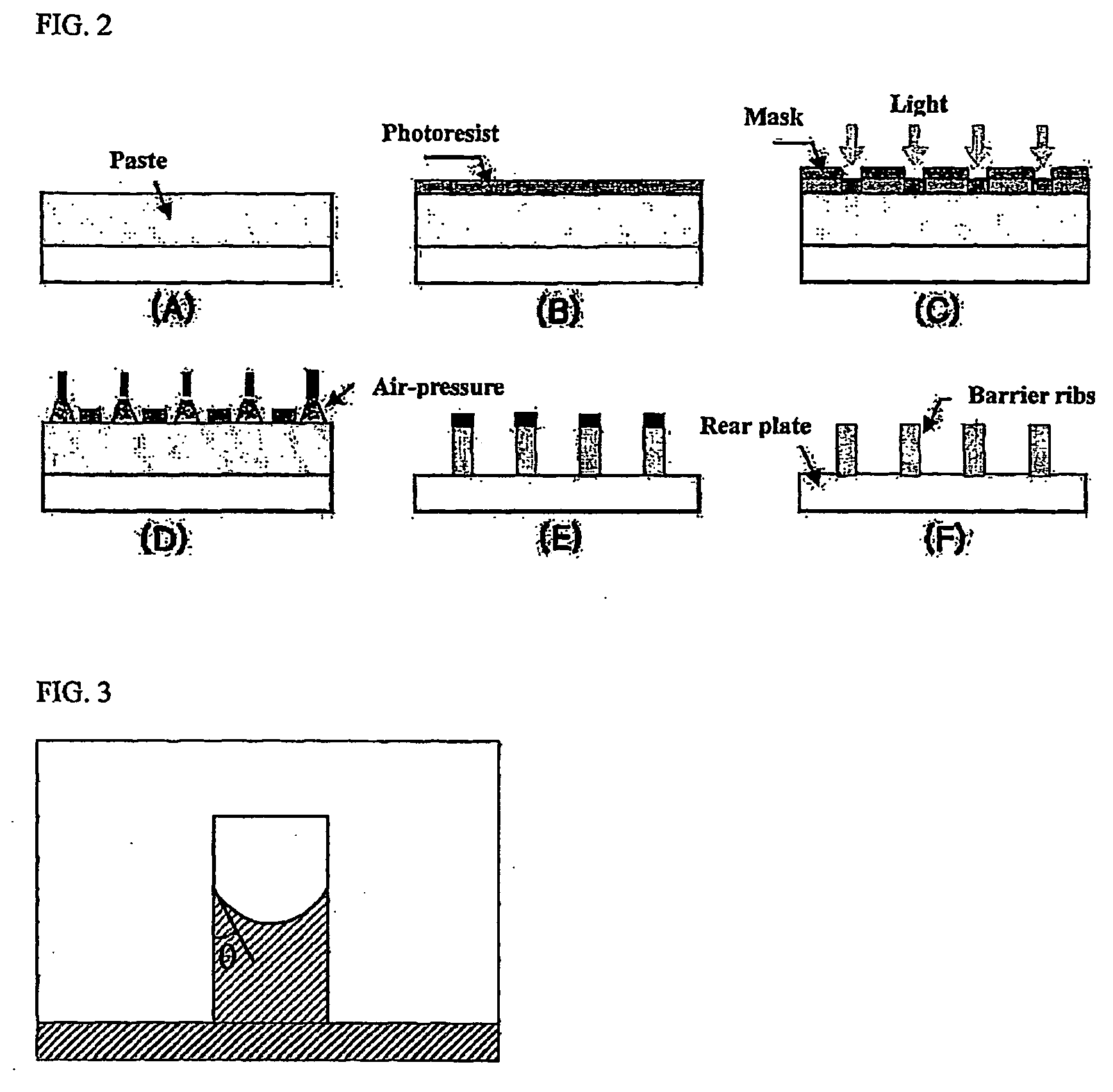Method of manufacturing barrier ribs for pdp by capillary molding of paste and paste compositions therefor
- Summary
- Abstract
- Description
- Claims
- Application Information
AI Technical Summary
Benefits of technology
Problems solved by technology
Method used
Image
Examples
embodiment 1
[0085] 100 g of powder including glass powder and alumina powder in the ratio of 8:2 is well mixed and then ball-milled for 8 hours. To this powder mixture, 17 wt % of thermosetting resin (e.g., bisphenol A epoxy resin or cycloalkyl epoxy resin) is added on the basis of the overall powder. And then, 13 wt % of LGE (manufactured by Kookdo Chemical Co. Ltd.) as a reactive diluting agent, 3 wt % of BF3-monoethylenediamine as a thermosetting initiator, 1 wt % of silicon (Si) surfactant (BYK-333 / BYK-111 / BYK-082: manufactured by BYK-Chemical Co. Ltd.) as wetting / dispersion / defoaming agents, and 0.8 wt % of tri-methoxy silane as a coupling agent are mixed together, namely mixed in a revolution-rotation mixer for 15 minutes, then mixed four times by using a 3-Roll mill and then mixed in the revolution-rotation mixer agent for 10 minutes to make a thermosetting paste.
[0086] The paste is then coated on a sodalime glass substrate on which the electrodes and the dielectric are coated, by means...
embodiment 2
[0087] Barrier ribs are manufactured in the same way as the first embodiment, except that the composition for manufacturing barrier ribs contains components as seen in the following Table 1.
TABLE 1CompoundContent (g)Thermosetting resinYH-300 (Kookdo Chemical)25Thermosetting initiatorBF-3 monoethylamine2Dispersion agentBYK-1111.5Reactive diluting agentnoneDefoaming agentBYK-0830.5Coupling agentTrimethoxy silane0.5Wetting agentBYK-3330.5
[0088] Though the reactive diluting agent is not contained in the paste of this embodiment, the capillary molding is possible because the viscosity of the used binder is low.
[0089] The barrier ribs are then observed by using a scanning electron microscope in order to check that a desired barrier rib is formed on the thick film on the glass substrate. As a result of the observation, it is found that the barrier ribs are formed to have an average height of 120 μm and an average thickness of 60 μm, as shown in FIG. 8.
embodiment 3
[0090]
[0091] Barrier ribs are formed by using composition including components as suggested in the following Table 2 through the same way as the first embodiment. However, this embodiment is different from the first embodiment just in the print that glass powder and alumina powder are initially added to the reactive diluting agent and the dispersion agent, which have relative low viscosity so as to basically make a uniform dispersion state, and then other additives are added.
[0092] As a result of checking the shape of the obtained barrier ribs through a scanning electron microscope, it is found that more uniform fine structure is obtained.
TABLE 2CompoundContent (g)Thermosetting resinERL-4221 (Kookdo Chemical)20Thermosetting initiatorBF-3 monoethylamine2Dispersion agentBYK-1111.5Reactive diluting agentLGE5Defoaming agentBYK-0830.5Coupling agentTrimethoxy silane0.5Wetting agentBYK-3330.5
PUM
 Login to View More
Login to View More Abstract
Description
Claims
Application Information
 Login to View More
Login to View More - R&D
- Intellectual Property
- Life Sciences
- Materials
- Tech Scout
- Unparalleled Data Quality
- Higher Quality Content
- 60% Fewer Hallucinations
Browse by: Latest US Patents, China's latest patents, Technical Efficacy Thesaurus, Application Domain, Technology Topic, Popular Technical Reports.
© 2025 PatSnap. All rights reserved.Legal|Privacy policy|Modern Slavery Act Transparency Statement|Sitemap|About US| Contact US: help@patsnap.com



